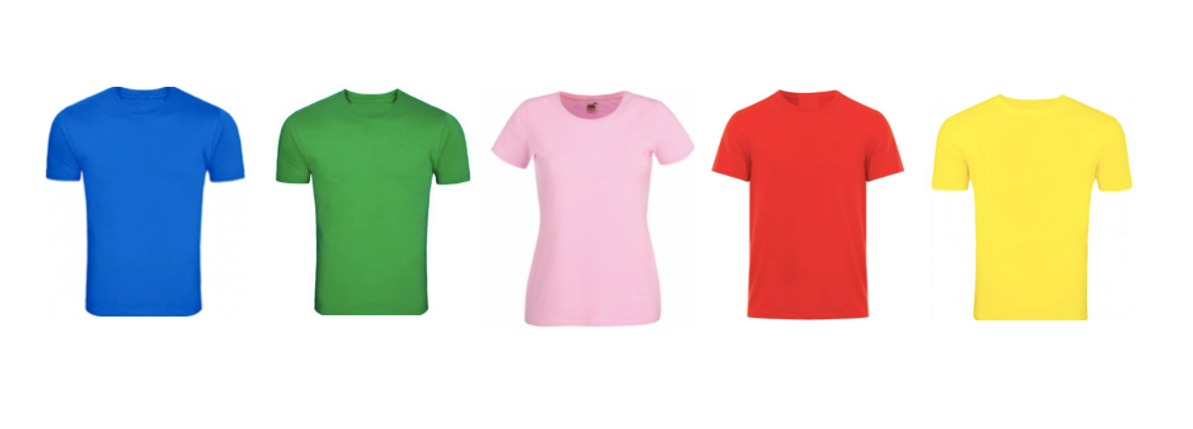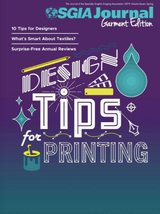T-Shirt Basics
T-Shirt Basics
This is the first page of a tutorial that teaches you the basics of how to start a t-shirt business successfully.
The basic tools, to print your own heat transfers, are not complicated. They are-
- A computer
- Some type of graphics program
- A basic inkjet printer
- Good quality heat transfer paper
- An appropriate heat press
Because success requires more knowledge than just knowing what equipment and supplies to buy, we begin with basic how to start a t-shirt business concepts.
Heat Transfers - General
Heat transfers are what is used to apply custom printed graphic designs and photographs to 100% cotton and cotton-blended T-shirts (50/50), mouse pads, tote bags and other fabric items.
The basic concept is simple. A standard inkjet printer and regular inks or T-Shirt inks are used to print on heat transfer paper (called a carrier paper in the trade).
The heat transfer paper has a film on it and this is the side that is printed on. After printing, the unprinted part of the transfer sheet is trimmed and the transfer is placed on the shirt and both are heated in a heat press with medium to high pressure.
When the heating cycle ends, the head of the transfer heat press is lifted and the transfer is complete.
Heat Transfers - Methods
To be successful, the entrepreneur must balance the choice of what they can do with what they shoulddo. This section looks at some important choices.
Heat Press vs. Iron
No matter what brand or type of paper you use, you will always get superior results with a heat press. That's it. End of story. Even the smallest, cheapest transfer heat press provides consistent and even, heat and pressure. Even the most expensive iron can do neither.
There is one situation, however, in the fray between heat press vs ironwhere, an iron might make sense. That would be where you are producing very small quantities of items and basically giving them away. Small quantities shouldn't wear your arm out and if it's free, the recipients shouldn't complain.
Professional Grade vs. "Store Bought" Paper
There is a lot of difference, between the two. What is available at an office supply or department store is ageneric paper, developed specifically for the low-end home iron market.
There is no successful professional (even part-time) using "store bought" heat transfer paper. The quality is just not good enough.
It has nothing to do with price (our professional grade paper is actually cheaper), only with the quality and durability of the transfer. The choice is yours.
Inkjet Printers vs. Laser Printers
Unless you already own a color laser printer, we usually suggest using an inkjet printer, for two reasons.
First, an excellent inkjet printer costs considerable less than even a cheap laser printer. Second, not all laser printers produce good heat transfers.
It has nothing to do with the print quality (which can be excellent). Rather, it is because many laser toners do not hold up to washing. We wouldn't want to see you buy a laser printer and then find out it wasn't suitable.
If you already own one, then get a small sample pack of paper and test the results (printing and washing). You may be very pleased.
However, Alpha Supply Company no longer sells any type of heat transfer paper for laser printers. We made that decision because of constant, uneven results in all laser heat transfer papers. The problem is in the coating (film) on the paper.
In a nutshell, the film has to melt in a heat press, so that it sticks on fabric. However, laser printers use a heated fuser to make the toner stay on the paper. All too often many fusers also melt the film and it sticks to the laser printer fuser.
It was such a hit or miss affair that we have elected to just stick with inkjet transfer papers.
"Soft Hand" vs. "Hard Hand"
In the trade, "hand" refers to how a transfer feels, before washing and after. A soft hand can certainly be felt but is not objectionable. A hard hand, as the name implies, is very stiff and can be objectionable.
Our heat transfer paper has a relatively soft hand, after transferring and is even softer after the first washing. However, you will always be able to feel it. There is no escaping that fact.
Be wary of advertising that claims to have "practically no hand" or "a hand so soft you can barely feel it" or some other nonsense. While you certainly don't want a cardboard feel, there has to be enough film to make the image stick on the garment. Also, because there is not much film, colors can be quite dull.
More importantly, you don't want a lot of expensive re-do's because the transfer won't hold up in the wash and the customer brings them back.
"Clear" Transfer Paper vs. "Opaque" Transfer Paper
These two transfer paper types have two totally different functions. "Clear" transfer paper is for white and light ash gray fabrics and "opaque" transfer paper is for colored fabrics. We provide exact details on the next page of your tour.
"Preprinted transfers" vs. "Your inkjet printed transfers"
Again, these are two completely different types of transfers, which serve completely different needs and purposes.
99% of preprinted transfers (like you can buy online) are screen-printed on a special type of paper. When the transfer is put on a shirt and heated in a heat press, the ink becomes soft and sticky. When the heat is removed, the ink is stuck on the shirt so tightly that the paper back is easily removed and nothing remains on the shirt except the image.
Many of our clients produce shirts with preprinted transfers, in addition to printing their own, on an inkjet printer. This is a viable option, for large quantities of the same thing.
Unlike preprinted transfers, 99% of inkjet printed transfers involve custom images (like photos) with multi-colors and often under 100 pieces. This customization, with no setup costs, and very low startup costs, as well as fast turnaround times, are the main strengths of printing your own heat transfers.
These competitive strengths are so important that even many screen-printing companies also offer inkjet printed transfers.
The most important fundamental on how to start a t-shirt business to remember about inkjet printed heat transfers, is how it works.
By itself, ink has no ability to stick to a shirt! It requires some type of film to make the image stay on the shirt. This film covers the paper sheet. This also means that if you do not trim unprinted areas off of your transfer, the film in that area will also be on the shirt.
There is no way to get around this fact. Of course, a rectangular or square image is really easy to trim (we have done a few hundred thousands in our time). The potential difficulty is in trying to trim an irregular shape.
This is why many pros will put a “box” around an irregular shape and then apply a colored background fill (to make the transfer into a square or a rectangle).
While inkjet printed transfers are not the solution for every situation, the market is so huge that literally tens of thousands (and probably more in the summer) of shirts are sold every day with this process.
Vinyl Cutters & Vinyl – Being able to vinyl cut your own designs, letters and numbers, as needed, provides extra opportunities. We’ll take a look at how.
Uniform Numbers – There is a big demand for putting numbers on uniforms, shirts, jackets, etc. The most common type is 6” and 8” black or white numbers. You’ll learn how to fulfill this simple request
Recent Posts
-
SGIA Journal
SGIA's spring addition for all things design, print, and artists.SGIA Spring Addition …16th May 2019 -
Forever Flex-Soft (No-Cut) Tagless Shirt Application
…11th Jun 2018 -
Graphtec Media Loading & Test Cut
…4th Jun 2018




